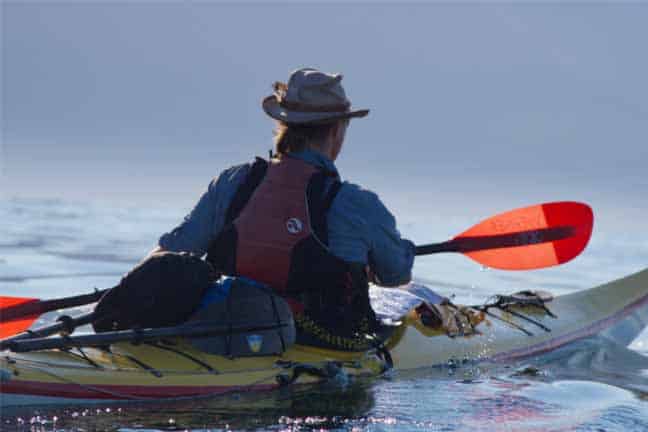

Editor & Article Writer for Outdoor Wilds
An introduction to kayak types and uses
In this article I take a look at the most common kayak types and uses and whether they’re suited to inland lakes and rivers or the sea. There are kayaks for beginners to the sport, plus all other levels of personal ability and experience in paddling.
Sit-on-top kayaks vs sit-in kayaks
The first main difference to note with a kayak is whether it”s a “sit-on” or “sit-in” kayak. A kayak is basically divided into 2 sections, the deck which is the top part and the hull the bottom part of the kayak.
Both types have hulls of course but it’s the deck that distinguishes the major difference between whether its sit-in or a sit-on type.
The deck of a sit-in kayak is enclosed with a cockpit in which you sit inside. A sit-on-top kayak simply just has raised decking surrounding the paddler and is fully open.
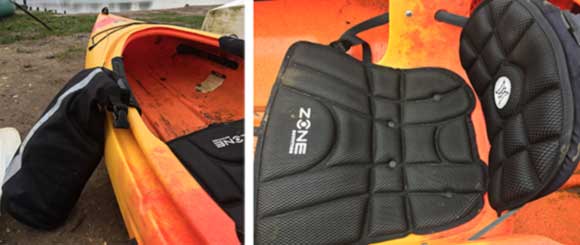
Pros & cons of both types of kayak
Sit-in kayak pros
Sit-in kayaks are generally better suited to cooler waters and weather environments. The cockpit that the paddler sits in will provide shelter from water and the wind, especially with the additional use of a cockpit skirt to seal the open cockpit area. This also allows for kayaking in white water and choppy seas.
Sit-in kayak cons
Generally sit-ins are a lot more difficult to get into and out of. If you do capsize it involves a degree of technique to get back in, plus the kayak will be full of water which will need bailing with a bailing pump.
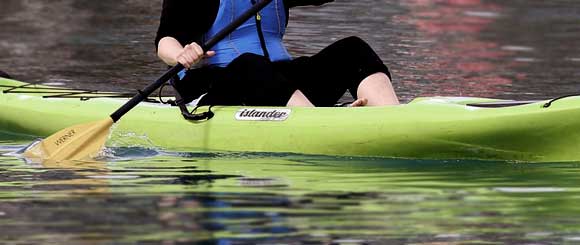
Sit-on top kayak pros
Sit-on tops are the easiest to paddle and generally use all round. They’re easy to get in and out of and are very stable on the water.
Any water that does enter the hull will self bail due to scupper holes situated in the bulkheads. Sit-on tops kayaks are ideal for warmer waters where you can enjoy entering the water for a swim and getting back on board with ease.
Sit-on top kayak cons
The downside to sit-on tops is that you will get wet, so choice of clothing to suit the weather and water temperature are essential.
Inflatable kayaks

Inflatable kayaks are the most versatile of all. They make an ideal choice for beginners starting off in the world of kayaking.
Ideal for beginners
An inflatable kayak is light. This makes turning and general maneuverability much easier compared to hard shell kayaks. It also makes them much safer as they are more difficult to turn over while on the water.
They are also relatively cheap to buy and are now made from modern composites that are hard wearing and durable.
I have written several articles aimed at inflatable kayak beginners that offer tips that will help you enjoy your kayak experience more.
Portability
A major plus point with an inflatable kayak is portability. You don’t need to transport the kayak using a roof rack on your vehicle. They’ll easily fit inside a small trunk of most cars.
Once you’ve arrived at a river or lake it’s just a matter of inflating the kayak using a pump fitted with a pressure gauge.
The ease of carrying an inflatable kayak doesn’t stop there. When hiking out in the wilds you can pack an inflatable kayak into a backpack too.
Touring kayaks

Touring kayak tend to be for the more seasoned paddler that wants to travel long distances on open water. They may be travelling along a river and stopping off to camp, so the ability to carry all the necessary camping gear for an overnight stay is essential.
They almost always have a hard sit-in shell with an apron, along with sealed bulkheads to store and keep gear and equipment dry. The sealed bulkheads also mean that if you do tip the kayak over there is less water inside to bail out.
When travelling long distances speed is more desirable over stability. This means a touring kayak is longer and narrower, allowing it to cut through the water with ease.
Sea kayaks

Sea kayaks are very similar to touring kayaks and share many characteristics. However there are a few features that sea kayaks have that you may not see on it’s touring counterpart.
A sea kayak will always have what is called perimeter lines. This is very strong bungee cord that run the length of the boat, fixed at a number of points along the length of the hull.
These lines are essential when in rough water to grab onto when trying to board a tipped kayak. They are also used in a rescue situation allowing a swimmer to grab onto them for buoyancy and safety.
Sea kayaks have watertight storage areas located at the front and rear of the enclosed cockpit. These are easy to access quickly and remain watertight even when the kayak has rolled.
White water kayaks
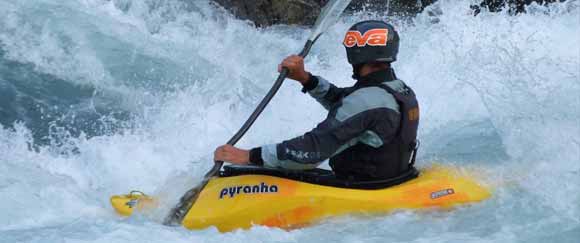
They fall into 3 sub classes typically:
- Playboats
- River runners
- Creek boats
Each type of boat is suited to different types of water, for example a creek boat is ideal for technical water with rocks and should only be paddled by advanced kayakers.
Dagger Kayaks have made some of the best whitewater kayaks for over 30 years and come with a reputation for quality durable boats.
Recreational kayaks
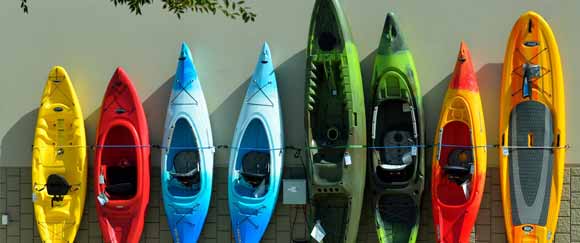
The first thing to consider when deciding what is the ideal kayak for recreational use is what type of water will you be paddling on. Is it an enclosed calm lake? or along a sea shoreline? The next consideration is the water temperature.
If your planning on paddling on a calm open lake with warm water suitable for swimming then a sit-on-top kayak will make the ideal choice for getting in and out of with ease to allow you to swim.
Large cockpit
If your going to paddle along a shoreline with cold water and a strong breeze, then a sit-in kayak with a large cockpit will give both room for you to manoeuvre and some protection from the elements.
So as you can see, the type of recreational activity does have a strong bearing on what type of kayak you choose. But generally recreational kayaks tend to be shorter and wider.
Wide hull fishing kayaks

Kayaks with a wide hull also allow for stand up fishing on calm inland waters and lakes, and there are kayaks specifically designed just for fishing too. My guide on how to choose a fishing kayak provide you with further information.
Summary
There is no right or wrong choice when making a decision on which type of kayak to buy or paddle. However taking into consideration and looking at the differences between each kayak will help you enjoy paddling far more. Stay safe and keep on paddling!
Popular Articles
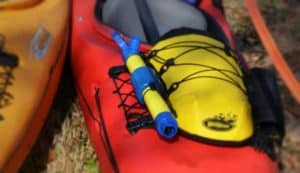
Best Kayak Deck Bag – (Buying Guide 2023)
Today I have 5 deck bags each offering different features and levels of protection to see which is the best kayak deck bag
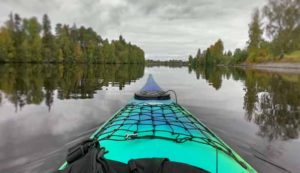
How To Keep Your Phone Dry While Kayaking
Carrying a mobile phone around with you all the time is now part of life today. Not only do they provide us with many social connections but they also play a very important role in safety, especially while kayaking.
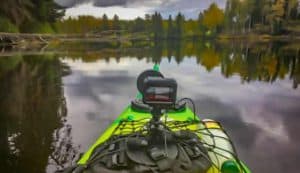
Tips For Kayaking with Action Cameras (Film More Dynamic Footage)
Taking pictures and especially recording video from a kayak is not an easy thing to do. If it is not done with some thought prior to setting out.
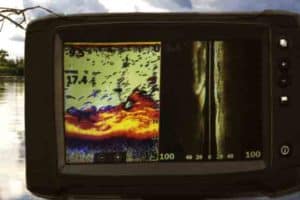
Best Cheap Fish Finder For Kayaks (Buying Guide)
Even when you are just kayak fishing, you still need to be able to actually find the fish
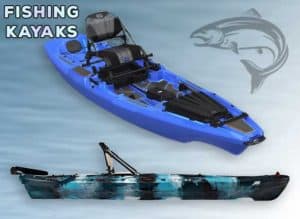
Best Stand-up Fishing Kayak (Buying Guide 2023)
There is no doubt that there are plenty of available options when it comes to stand-up fishing kayak
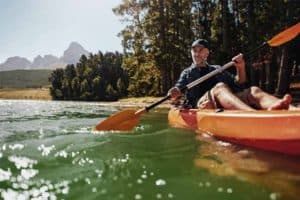
Best Sit-on-Top Kayak for Beginners
When it comes to water sports, kayaking is one of the most fun things I have ever done.
Popular Articles
- Introduction to kayaks
- Sit-on-top v sit-in
- Pro & cons of both
- Inflatable Kayaks
- Touring kayaks
- Sea Kayaks
- White water kayaks
- Recreational kayaks
- Fishing kayaks
- Summary
